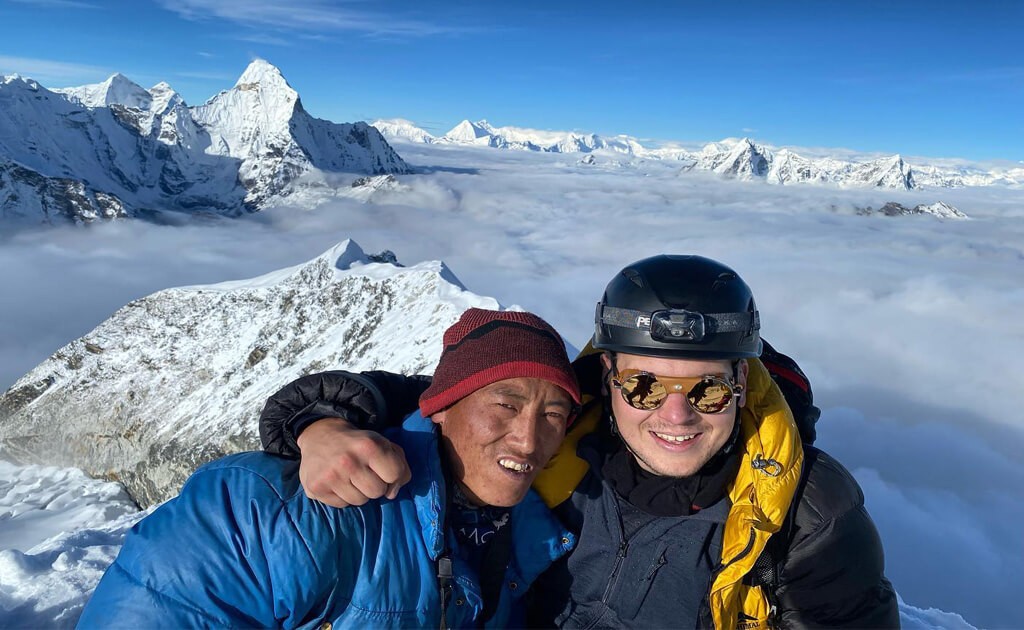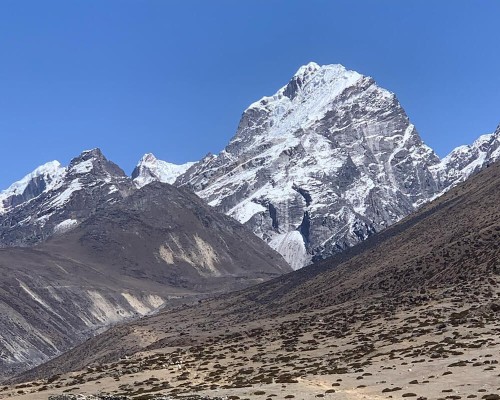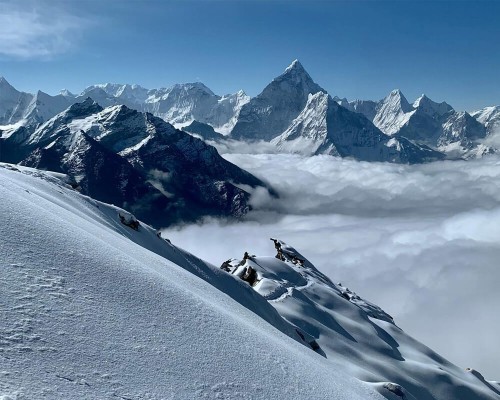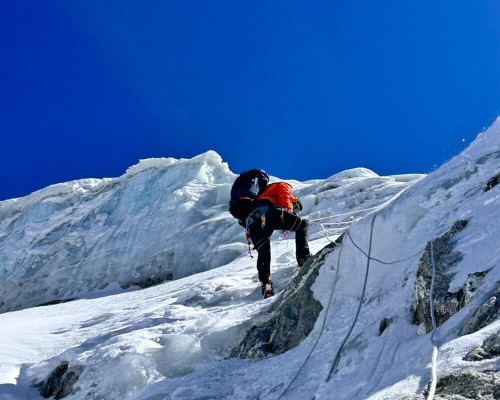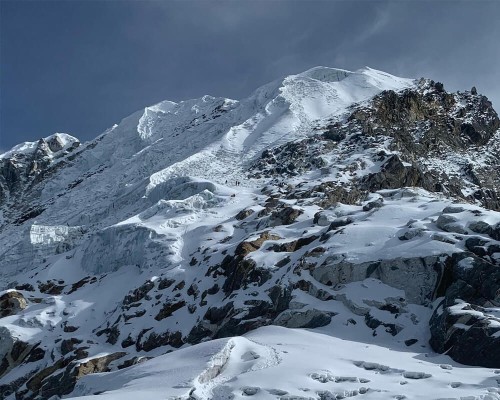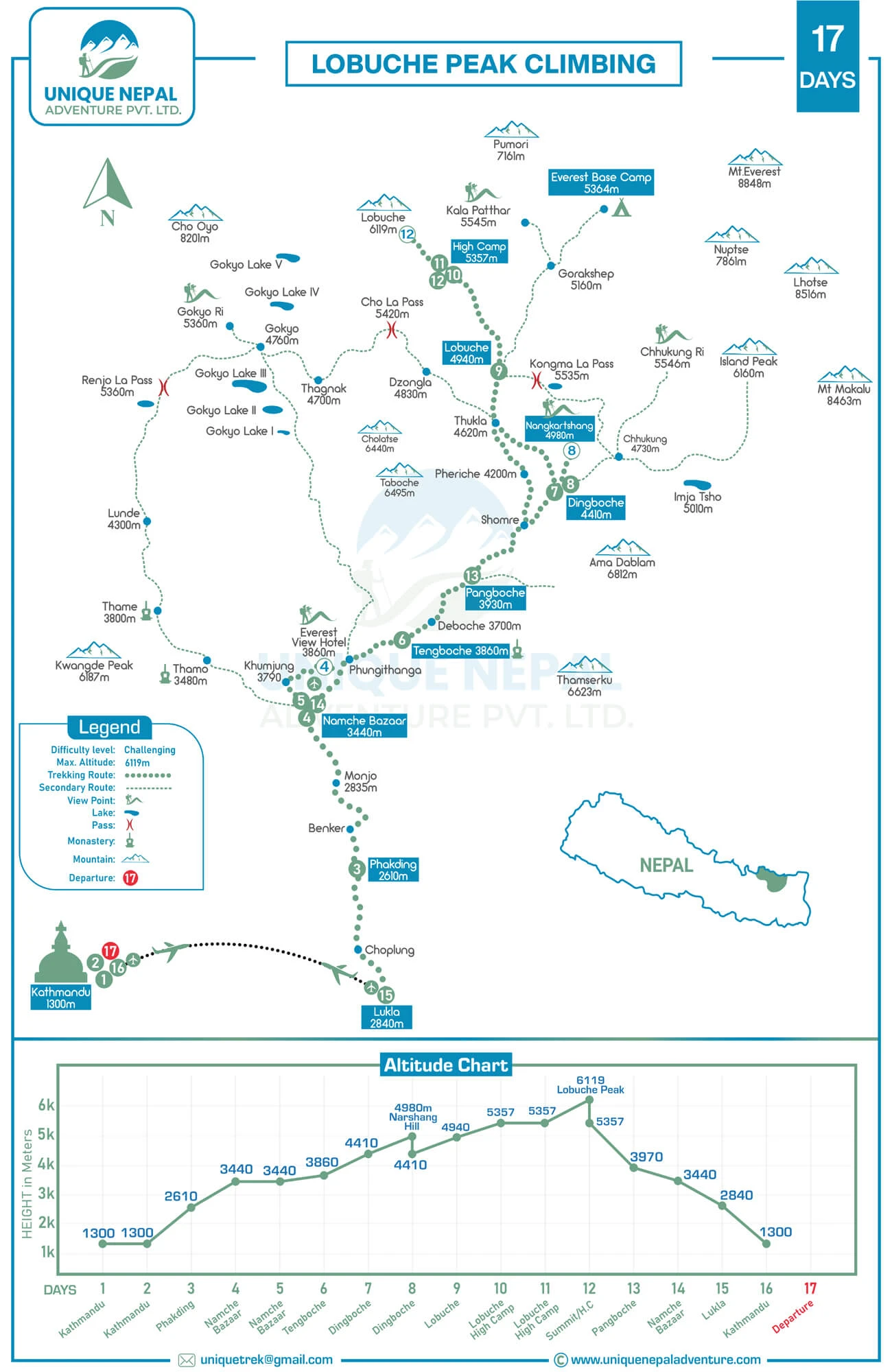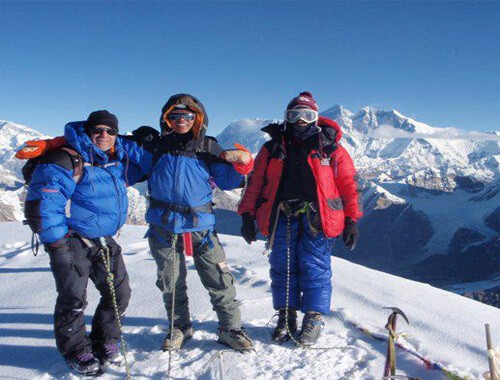Lobuche Peak Climbing: A Thrilling Himalayan Adventure
Lobuche Peak Climbing is one of the most thrilling and technical mountaineering adventures in the Himalayas. Located in the Khumbu region, this 6,119-meter (20,075 ft) peak stands proudly in front of the world’s tallest mountain, Mt. Everest (8,848 m). Offering panoramic views of Everest, Lhotse, Makalu, Cho Oyu, and many other towering peaks, Lobuche Peak is a dream climb for adventure seekers and experienced trekkers.
Stand on the summit of Lobuche Peak offers one of the most stunning 360-degree high Himalayas panoramas, including Everest, Lhotse, Makalu, Cho Oyu and Ama Dablam, all in one breathtaking view. A memory that will shine for a lifetime.
Scenic Route to Lobuche Peak Climbing
The journey begins with a scenic flight from Kathmandu to Lukla, followed by a trek through the legendary Everest Base Camp trail. You’ll pass through iconic Sherpa villages such as Namche Bazaar, Tengboche, and Dingboche, immersing yourself in Sherpa culture and traditions along the way.
Acclimatization Days in Namche and Dingboche
Proper acclimatization is key for a successful adventurous climb. After reaching Namche Bazaar (3,440 m) on Day 2, we recommend a rest day with a short hike to the Everest View Hotel (3,860 m) or Khumjung village. This helps your body adjust by ascending and then descending over 400 meters.
Another important stop is Dingboche (4,410 m), where a hike to Nangkartshang Peak (5,000 m) offers excellent altitude preparation and stunning views.
These acclimatization hikes, followed by visits to Everest Base Camp (5,364 m) and Kalapatthar (5,545 m), ensure you're well-prepared for the Lobuche Peak (6,119 m) summit.
Along the trail, you'll explore vibrant Buddhist culture through ancient monasteries, mani walls, prayer flags, and stupas. Namche Bazaar, the gateway to Everest and the heart of the Khumbu region, offers a blend of modern amenities and traditional charm.
The Magic View from Top of Lobuche Peak (6,119m)
Lobuche Peak climbing is not only an adventurous and technical challenge, it’s also a truly delightful experience. The climb offers breathtaking views of the world’s highest mountains, including Mt. Everest (8,848 m), Lhotse (8,516 m), Makalu (8,463 m), and Cho Oyu (8,201 m), and directly ahead, the stunning Amadablam (6,812 m), along with Pumori, Nuptse, and more.
You will see the breathtaking, magical, white, snow-capped mountain views from the top of the Lobuche peak. The peaks are listed below.
- Mt. Everest 8848m / 29029ft
- Mt. Lhotse 8516m / 27940ft
- Mt. Makalu 8463 m / 27766 ft.
- Mt. Amadablam 6812 m / 22350 ft.
- Peak 38: 7590m / 24902ft
- Mt. Pumori 7161m / 23495ft
- Mt. Nupse 7861m / 25791ft
- Mt Thamserku 6608m / 21680ft
- Island Peak 6160m / 20210ft
- Taboche Peak 6495m / 21310ft
- Lobuche Peak 6119m / 20076ft
Why Climb Lobuche Peak with Us?
We are a responsible trekking company in Nepal. We have a well-trained, licensed, professional, and dedicated team at Unique Nepal Adventure, and our first priority is the safety, success, and satisfaction of our clients.
- Experienced & Certified Guides: Our professional Sherpa climbing guides are highly skilled, government-certified, and deeply committed to your safety and success.
- Supportive Team, Like Family: We treat every climber with care and respect—offering encouragement, guidance, and genuine support from start to summit.
- Pre-Climb Training at Base Camp: Hands-on training ensures you’re fully prepared to handle ropes, crampons, and glacier travel safely and confidently.
- Full-Board Teahouse and Camping Service: We provide excellent services in teahouse facilities in trekking and full-board camping facilities in Lobuche Base Camp and High Camp. It will be a nice lodge and tented camp. We take care of everything so you can focus on the climb.
- Safety First: Your well-being is our top priority. We monitor altitude, weather, and conditions closely to ensure a secure and smooth experience.
- Local Expertise, Personal Touch:
- With deep roots in the Khumbu region, our team shares authentic insights, cultural experiences, and warm hospitality throughout the journey.
Cost of Lobuche Peak Climbing Permit
To climb Lobuche Peak, you are required to obtain specific climbing permits. The details are mentioned below:
Lobuche Peak Climbing Special Permit (Based on Season)
- Spring (March–May): USD 250 per person
- Autumn (September–November): USD 125 per person
- Monsoon (June–August): USD 70 per person
- Winter (December–February): USD 70 per person
Additional Required Permits
- Sagarmatha National Park Entry Fee: NPR 3,000
- Pasang Lhamu Rural Municipality Entry Fee: NPR 2,000
- TIMS Card (Trekking Information Management System): NPR 2,000
Foods: Everywhere on a local basis for various meals as organic and hygienic. And nice meals while camping in base camp with a professional cook.
Accommodation: Neat and clean comfortable lodge during the trek and twin-sharing basis tented camp in Lobuche base camp and high camp.
Transportation: Kathmandu to Lukla and returning from Lukla to Kathmandu by flight in just 35 minutes.
Cost of Lobuche Peak Climbing
The cost for Lobuche Peak Climbing is USD 2,200 per person, based on a minimum of two participants. It is a full-board package with lodging, food, camping, permits, trekking and climbing guides, porters, etc. For solo climbers, the cost will be slightly higher to cover additional logistics and support. We offer excellent service, led by professional climbing guides, ensuring a safe and successful ascent.
People, Culture, and Religion of the Lobuche Peak Area
They are Sherpa and Rai; they have a typical lifestyle, culture, customs, and languages, and their religion is Buddhism. Most of the place has monasteries. They have a very ethical and typical culture.
Best Season for Climbing Lobuche Peak
The best season to climb Lobuche Peak is the autumn season, such as September, October, November, and December; another good time is the spring season, such as March, April, and May. Those months' weather is always clear, with a good temperature, good visibility, and fantastic, crystal-clear mountain views.
Monsoon seasons are also pleasant; most of the time, it rains, it is cloudy, and visibility is poor. But we also organize in the monsoon season. The months are June, July, and August. The winter season is freezing and snowy, and we don’t recommend climbing. It is the months, especially January and February, that are very cold and icy.
- Autumn Season: September, October, November, and December.
- Winter Season: Late December, January, and February.
- Spring Season: March, April, and May.
- Monsoon Season: June, July, and August.
Carry your important medicine
Lobuche Peak Height: 6119 m. Medicine is very important. If you have any disease, you must carry the medicine with you. In that "prevention is better than cure" mountain region, we can’t find any healthcare, clinics, or hospitals. If there is a clinic, you may not get medicine according to your problem.
I humbly request that you prepare if you are continually taking any medicine. Please bring it with you or buy it in Kathmandu. It is very important, but our company will provide a first aid kit bag for fever, stomach problems such as diarrhea, cough, and cold, some bandages, tape, Diamox for high altitude sickness, etc.

